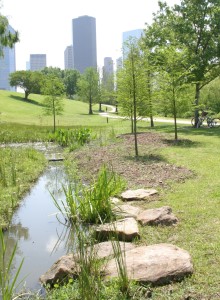In general, the steps of a wetland restoration project are as follows:
What are the restoration project objectives? Flood mitigation, public green space, improvements in water quality, wildlife habitat, stormwater treatment? Outlining the basic goals of the projects is the first step in the process and will guide site selection, identifying partners, and ultimate design of the project.
2) Site Selection
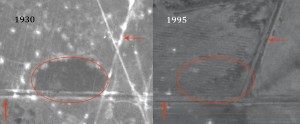 A site must not only be located in a feasible area logistically, it must also function in a way that meets project goals. If a project is intended to provide natural park space to a local community, it has to be located in an area that is easily accessible to citizens. The potential hydrological connection of a restoration project to greater waters may also be a factor to consider in site selection. Historically images may be used to assess the history of the site.
A site must not only be located in a feasible area logistically, it must also function in a way that meets project goals. If a project is intended to provide natural park space to a local community, it has to be located in an area that is easily accessible to citizens. The potential hydrological connection of a restoration project to greater waters may also be a factor to consider in site selection. Historically images may be used to assess the history of the site.
The best restoration projects engage partners from throughout the community: businesses, citizen groups, local government, and state and federal government. A wide variety of stakeholders will be needed to help design, fund, and implement a restoration project.
4) Project Design
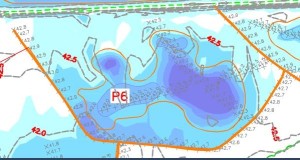 The technical planning process for the restoration project will engage project partners and focus on meeting the project goals. Expertise in many fields, from hydrology to community outreach may help complete this stage of the process.
The technical planning process for the restoration project will engage project partners and focus on meeting the project goals. Expertise in many fields, from hydrology to community outreach may help complete this stage of the process.
5) Construction of the Restoration Site
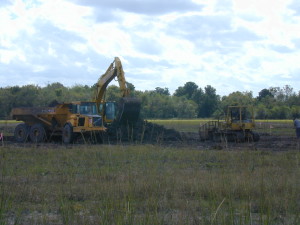 Perhaps the most visual stage of the process, site construction involves implementation of the project design plans. Often heavy construction equipment is used to adjust the site to the grade and elevations needed for wetlands.
Perhaps the most visual stage of the process, site construction involves implementation of the project design plans. Often heavy construction equipment is used to adjust the site to the grade and elevations needed for wetlands.
6) Planting of the Restoration Site
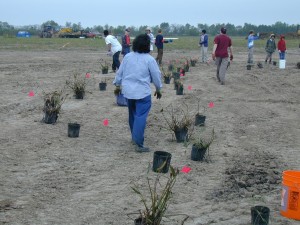 This stage of the process may involve planting new vegetation at the created wetland sites, as well as enhancing vegetation at existing wetland sites. Wetland plants that have been collected from nearby are added to the site. Often, volunteers and student groups assist with the planting efforts.
This stage of the process may involve planting new vegetation at the created wetland sites, as well as enhancing vegetation at existing wetland sites. Wetland plants that have been collected from nearby are added to the site. Often, volunteers and student groups assist with the planting efforts.
7) Monitoring of Site Success
After a site has been planted, scientific monitoring over the course of a year or a few years will be completed to make sure the wetland is functioning as designed. If there are issues found with the site, construction adjustments and additional planting can occur.
 Texas Community Watershed Partners
Texas Community Watershed Partners 